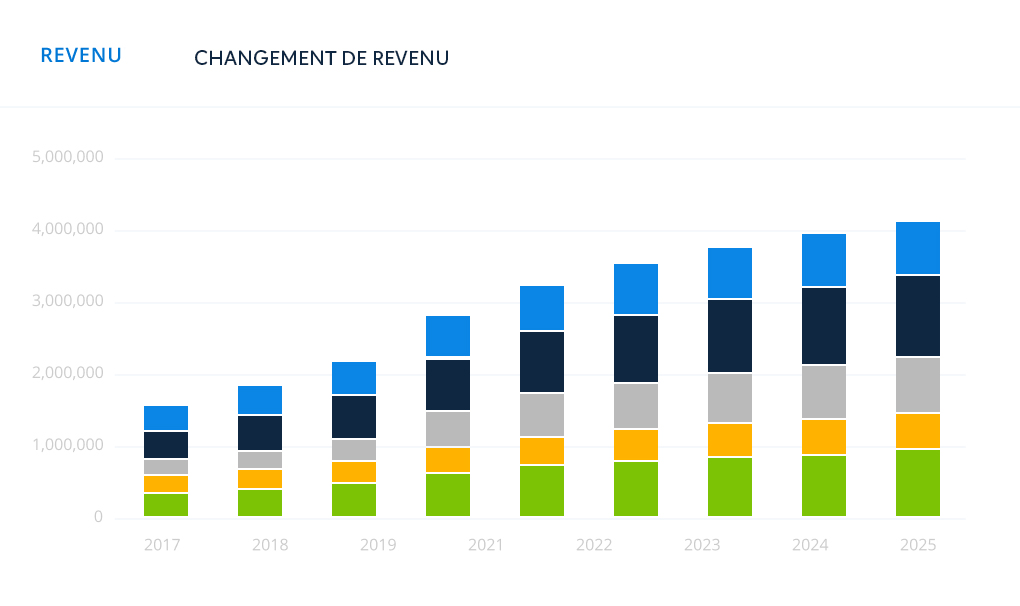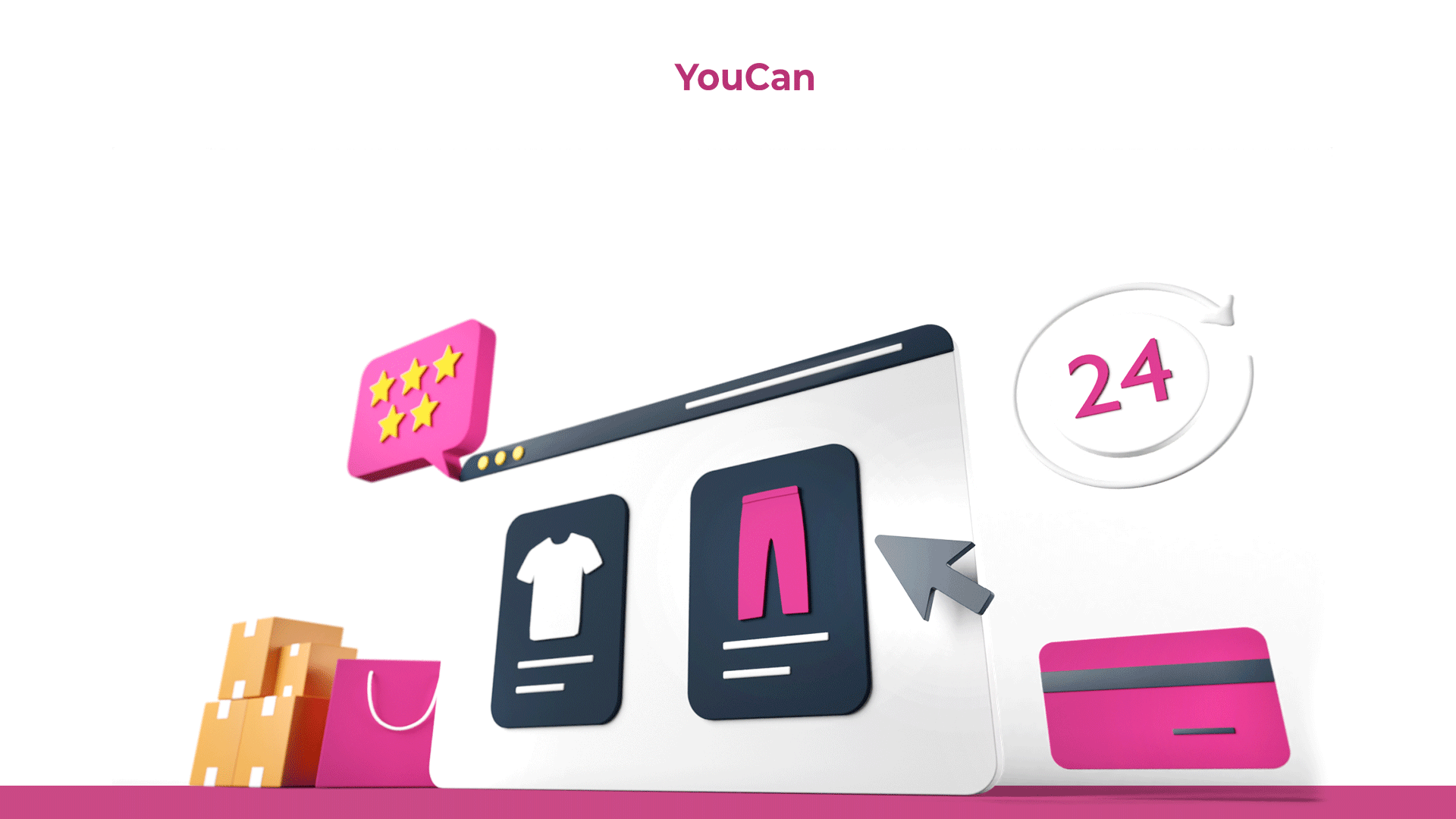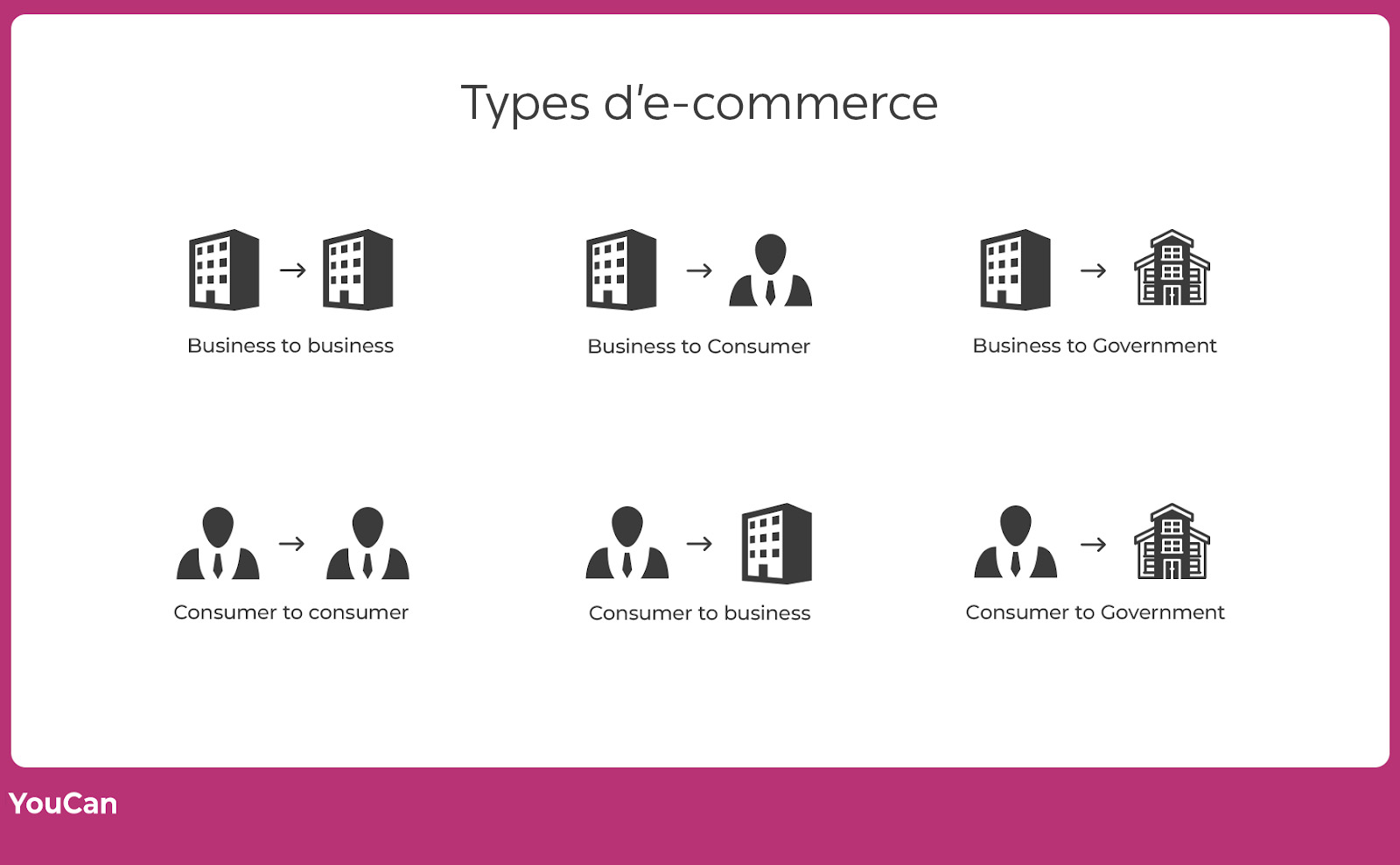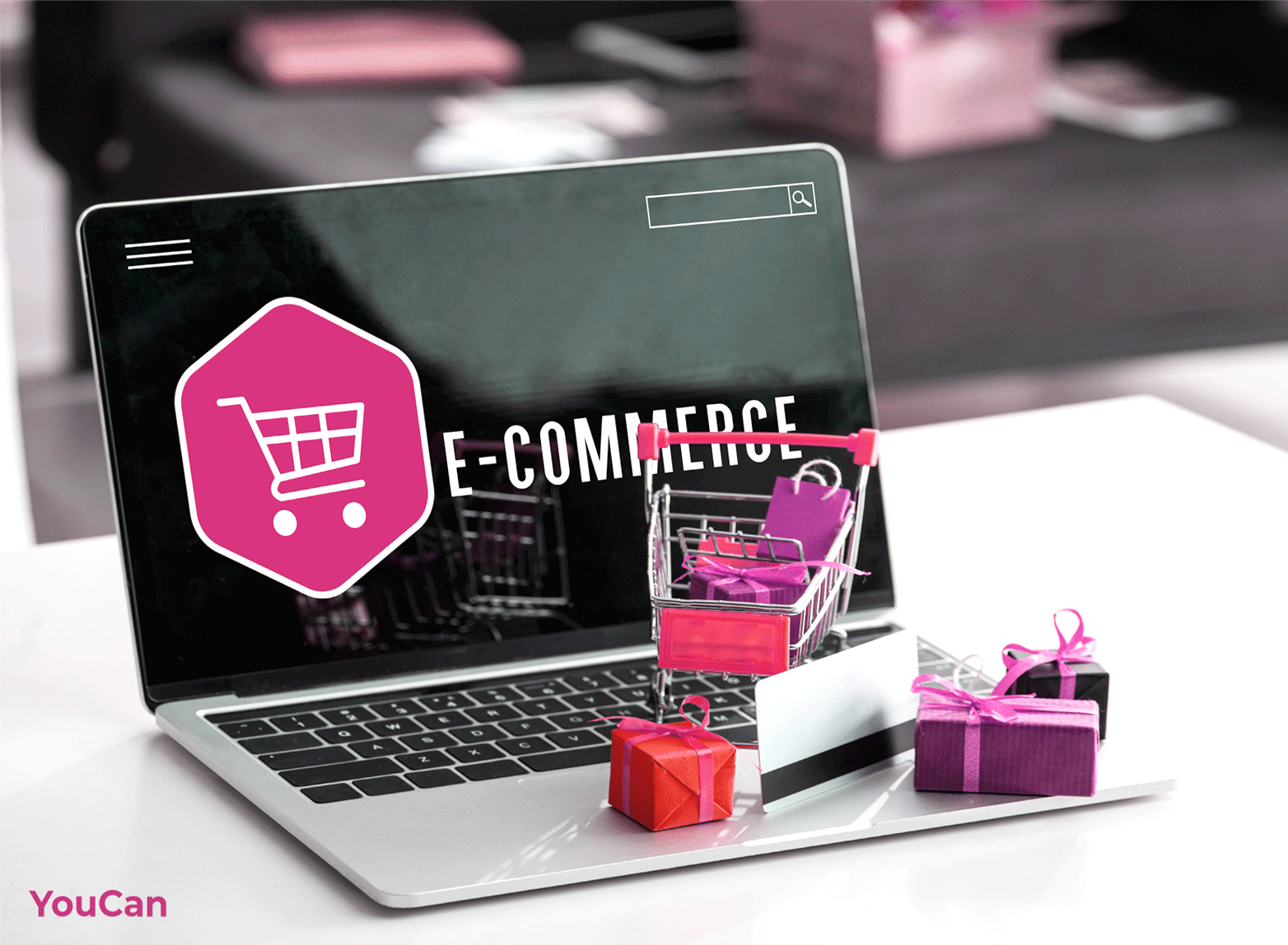En 2024, les ventes en ligne ont dépassé les 4 100 milliards de dollars américains dans le monde, un chiffre qui ne cesse de croître ! Incroyable, non ? Ceci montre à quel point l’e-commerce est devenu essentiel et occupe une place importante dans l'économie mondiale.
 Source : E-commerce mondial - statistiques et faits 2025
Source : E-commerce mondial - statistiques et faits 2025
Qu'est-ce que le e-commerce ? et pourquoi est-il important? Découvrons ensemble ses avantages, les différents modèles d’e-commerce et les différents types de boutiques en ligne.
À partir de cet article de blog, nous allons découvrir les éléments suivants:
- Les avantages de l’e-commerce
- Les différents modèles d’e-commerce
- Les types de boutiques en ligne
Qu'est-ce que l'e-commerce?
L’e-commerce, tout simplement, consiste à vendre en ligne ! Cela comprend:
- Le commerce de détail et de gros
- La vente directe
- Les enchères
- La publicité et le marketing
- Le service client
- Les transactions financières électroniques entre particuliers et entreprises
L’e-commerce existe depuis les années 70, mais ce n'est que dans les années 90 qu'il a véritablement pris son essor avec le web, l'évolution des nouvelles technologies de l’information et la Communication, et les systèmes de paiement en ligne.
Par la suite, l’activité de l’e-commerce a explosé avec la pandémie du Covid-19, notamment lorsque les gens étaient confinés et ne pouvaient plus quitter leurs domiciles. Ainsi, les gens se sont familiarisés avec l’achat en ligne et la livraison des produits jusqu'à leurs portes d'entrée.
Quels sont les 10 principaux avantages de l’e-commerce?
Évidemment, nombreux sont les avantages de l’e-commerce. D’ailleurs, ce dernier a connu un succès mondial et est devenu aussi important que le commerce traditionnel.

L’e-commerce offre plusieurs avantages, notamment :
- Processus d'achat rapide : Il vous permet de gagner en matière de temps et d'énergie et ce en commandant en ligne en quelques clics, sans avoir à vous déplacer en magasin. De plus, il est possible d’obtenir instantanément des informations détaillées sur les produits désirés.
- Informations détaillées sur le produit : Contrairement au commerce traditionnel, l’e-commerce permet aux clients d'obtenir des informations détaillées et précises sur les produits ou services grâce aux outils mis à leurs dispositions par la boutique en ligne.
- Description du produit : il est possible de préciser les principales caractéristiques du produit, ses avantages pour le client et d'autres détails qui le rendent plus attrayant et le mettent en valeur.
- Photos et vidéos : Il est possible (et recommandé d’ailleurs) d’utiliser des photos et des vidéos pour décrire et expliquer le fonctionnement du produit, tout en fournissant le maximum de détails possibles. Vous pouvez prendre des photos de haute qualité du produit sous tous les angles, et inclure une vidéo montrant son utilisation facile.
- Notes et avis : Les clients peuvent laisser des commentaires sur leurs expériences avec le produit, ce qui permet aux autres clients de se faire une idée précise de ses avantages et inconvénients. Cela permet de prendre la bonne décision d'achat et renforce la confiance et la crédibilité du produit.
- Comparaison des produits et des prix : L’e-commerce permet aux clients de comparer facilement et en toute transparence les prix et les produits. De plus, il leur offre la liberté de choisir et de parcourir une large gamme de produits et de services.
- Portée mondiale : Les commerçants en ligne peuvent désormais atteindre facilement un public mondial sans frontières géographiques, augmentant ainsi leurs chiffres d’affaires et leurs bénéfices.
- Rentabilité : L’e-commerce réduit les coûts opérationnels et administratifs grâce à l'absence de magasins physiques et à la main-d'œuvre supplémentaire, ce qui se traduit par des prix plus compétitifs. Par conséquent, de nouvelles opportunités d'emploi sont créées dans différents domaines tels que la conception publicitaire, la confirmation de commande, la livraison, etc.
- Suivi et analyse des données : Les e-commerçants peuvent collecter et analyser des données et comprendre les besoins des clients, ce qui leur permet d'améliorer leurs services et produits, ainsi que leurs stratégies de marketing direct.
- Meilleur service client : L’e-commerce peut améliorer le service client en proposant des options d'assistance technique en ligne et en répondant rapidement et à tout moment aux questions des clients.
- Options de paiement multiples : L’e-commerce permet aux clients de choisir le mode de paiement le mieux adapté à leurs besoins et préférences, offrant ainsi plus de flexibilité et de commodité dans le processus d'achat et un impact positif sur l'expérience d'achat globale.
- Potentiel de revenus 24h/24 et 7j/7 : Les boutiques en ligne fonctionnent 24h/24, sans respecter les horaires d'ouverture des magasins traditionnels, ce qui augmente les chances des commerçants de générer des revenus indépendants d'un horaire précis.
- Évolutivité : Les outils de boutique en ligne vous permettent de traiter un grand nombre de commandes de manière fluide et efficace, grâce à diverses applications et options, telles que le suivi des stocks, la connexion de la boutique aux systèmes des transporteurs, la consultation du statut de paiement de toutes les commandes, ainsi que d’autres procédures pouvant être mises en œuvre selon le type d’e-commerce exercé.
Quels sont les types d’e-commerce?

Pour certains, lorsqu'ils entendent parler d’« e-commerce », la première chose qui leur vient à l'esprit est le processus d'achat de produits ou de services proposés par une boutique en ligne, leur expédition, leur réception ainsi que leur mode de paiement, et rien que cela !
Bien que ce type de commerce électronique soit considéré comme le plus courant, il n'est pas le seul. Il s'agit du commerce interentreprises (B2C). Il en existe d'autres, notamment :
Consommateur à Consommateur (C2C)
Il s'agit essentiellement d'un consommateur qui vend des produits ou des services directement à un autre consommateur, par exemple lorsqu'il crée une offre sur un marché en ligne pour vendre ses vêtements ou ses meubles d'occasion.
Entreprise à Entreprise (B2B)
Il s'agit d'une relation commerciale entre deux parties professionnelles. Les producteurs et les grossistes traditionnels utilisent généralement ce type d’e-commerce.
Entreprise à Consommateur (B2C)
Le type d’e-commerce typique est celui où une entreprise (vendeur, commerçant) vend des biens ou des services au consommateur final. Il correspond à la partie vente au détail de l’e-commerce, c’est là où le commerce de détail traditionnel opère habituellement.
Gouvernement vers Consommateur (G2C)
Ce type d’e-commerce désigne les opérations commerciales impliquant la fourniture de services et de transactions gouvernementales aux citoyens via Internet. Il s'agit notamment de divers services gouvernementaux tels que la délivrance de permis, de licences et de certificats, le paiement de frais, de taxes et d'amendes, le suivi de l'état d'avancement des demandes et des transactions gouvernementales via Internet, ainsi que de nombreux autres services que le gouvernement peut fournir aux citoyens dans ce contexte.
Entreprise vers Gouvernement (B2G)
Ce type d'approvisionnement comprend tous les appels d'offres, enchères, contrats et autres transactions commerciales qui se déroulent exclusivement entre les entreprises et les gouvernements. Cela requiert des prestataires de services et des fournisseurs pour répondre aux besoins des gouvernements.
Consommateur vers Entreprise (C2B)
Il s'agit de la mise en vente de services ou de produits par des particuliers à des entreprises qui recherchent précisément ce type de services ou de produits. Exemple : des influenceurs proposant leurs prestations aux entreprises.
Quels sont les différents types de boutiques en ligne?
Il est possible de classifier les boutiques en ligne selon la qualité des produits et services qu’elles proposent, nous distinguons notamment :
- Magasins de vente au détail de marchandises diverses : Il s’agit des boutiques en ligne qui proposent une large gamme de produits et de marchandises, tels que les articles de mode, l'électronique, l'électroménager, les bijoux et les articles de fitness.
- Boutiques en ligne de services : Ces boutiques proposent des services en ligne tels que les stages et les formations à distance, les services de graphisme, les conseils juridiques et financiers, les services de développement logiciel, de conception web, de traduction, de fitness, de stylisme, de décoration d'intérieur, etc.
- Fournisseurs de produits numériques : Ces boutiques permettent aux clients d'acheter et de télécharger des produits numériques tels que des jeux, des livres numériques, des logiciels, des applications mobiles, de la musique, des films, des formations, des photographies, des modèles prêts à l'emploi dans divers domaines du design, et bien d'autres produits numériques.
Il est clair que l'e-commerce est l'un des secteurs qui connaît la croissance et le développement les plus rapides actuellement. Il offre de nombreuses opportunités aux jeunes pour atteindre leurs objectifs professionnels et personnels.
De plus, l’e-commerce vous permet de travailler de n'importe où et à tout moment, ce qui en fait une excellente option pour ceux qui recherchent un travail indépendant leur permettant d'améliorer leur vie.
Il suffit d'une démarche claire, d'une bonne dose de persévérance et d'une volonté de fer. Qu'attendez-vous?
Démarrez votre aventure dès maintenant et créez votre boutique en ligne sur YouCan.
Maintenant que vous comprenez ce que c’est que l’e-commerce et son importance, nous vous invitons à consulter notre guide :
- Comment créer un business e-commerce?
